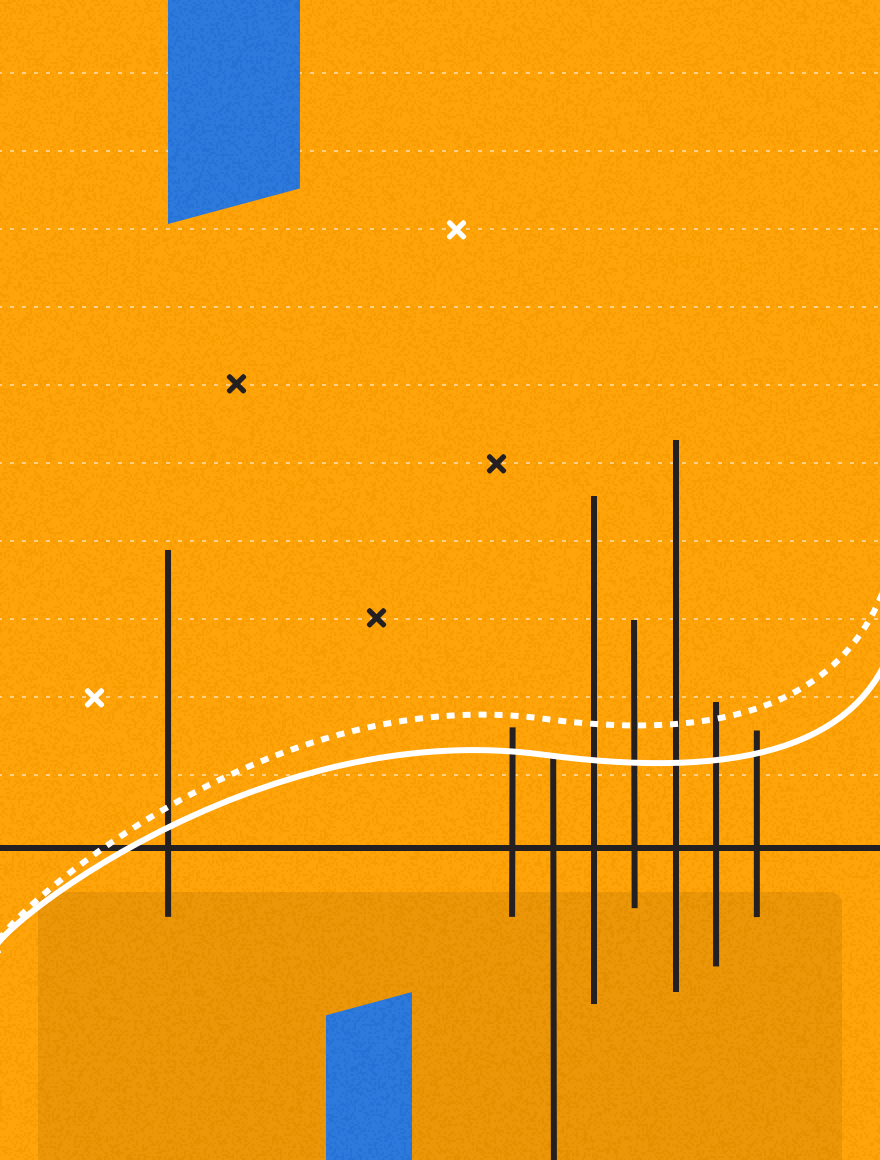Sales forecasting is equal parts art and science, right? Well, not so fast. The ‘art’ aspect of sales forecasting doesn’t need to be an educated guess. In fact, having the right methodologies and best practices in place throughout the entire sales process, married with the right technology, can make sales forecasting look a lot more like an exact science.
Effective CRM systems, automation, and even tools like account planning technologies have made sales forecasting more or less a daily activity, one that updates with the activity of your sales people. It is no longer about guesswork. It can be articulated effectively and used to make the most important and business critical decisions.
In this guide, we’re going to cover everything there is to know about sales forecasting, starting with the basics.
What is Sales Forecasting?
Put simply, sales forecasting is an estimation of how much your business intends to sell during a specific time frame (typically on a quarterly or yearly basis). Sales forecasts can derive their data from a variety of sources, but most commonly they come from a combination of input from sales reps and analytics tools (typically used within a CRM).
Is Sales Forecasting Outdated?
Some claim that sales forecasting is outdated. However, sales forecasting is still relevant today. It’s just that, thanks to new technologies and proven methodologies, relying on an educated guess to project expected revenue is no longer enough. Indeed, sales forecasting has become incredibly reliable and accurate, thanks to advancements in methodology and technology.
Is Sales Forecasting Important?
Sales forecasting is important. In fact, many consider it among the most important metrics for businesses. Businesses use sales forecasts to make a variety of critical decisions for their business.
These decisions include things like where to expend the budget, and where to invest in headcount. As sales teams identify increases in revenue, businesses can appropriately adjust and hire the number of professionals needed to handle the surge.
Sales forecasts also help businesses to understand potential problem areas. Is there a labor shortage issue? Something that could be modified from a product perspective? Is there more money going to be available that can be allocated towards marketing? Are there other weaknesses in the buyer’s journey that need to be addressed? Sales forecasts can help answer these sorts of questions.
Ultimately, the revenue team’s sales forecast is one of the most important numbers in all of business, ensuring investments are being made where they need to be, and enabling predictable revenue.
Who is Involved in Sales Forecasts?
Because sales forecasting is such an important practice, there are several key players involved in the process. These include:
Product Leaders: They establish the products and define when they will be sold.
Sales Leaders: Sales leaders are instrumental in any business’s forecasting process. They are the ones who orchestrate the forecasts from salespeople on their teams and help deliver a full picture of what the sales organization is expected to bring to the table.
Sales Reps: Reps are involved at the micro level, but the importance of their contribution to the overall forecast can’t be underrepresented. In fact, it is from the reps at the front lines that we get most of our insights into projected revenue.
Why Are So Many Sales Forecasts Wrong?
With 68% of companies missing their sales forecast, it’s safe to say there’s plenty of room for improvement for most sales forecasts. However, what is it exactly that leads to such a disparity between expectations and reality? Here are a few things causing sales forecasts to go wrong.
Companies Struggle to Assess the Current State vs. Targets
It’s easy to assign quotas to your team. It’s harder to make those numbers a realistic reflection of your business. It’s harder still to establish a system that’s flexible enough to respond to circumstances as you go.
The only way to tackle this is to find a top-notch technology, one that integrates with your CRM, and track which deals are being closed, what’s projected in the short term and what possibilities are hovering on the horizon. Ideally, the same technology would help you prioritize low-hanging fruit without losing sight of bigger, high-impact deals.
Too Much Time is Sunk Into the Wrong Forecasts
Sales managers spend up to 10% of their workweek drawing up often inaccurate forecasts. Why not spend that time exploring which deals are easier to win, and focus energies on effective prioritization instead?
When businesses focus on the key deals – the ones they’re confident they can win, they find accuracy rapidly improves.
Changes Sneak Up on You
Is your team working dozens – even hundreds – of leads at once? There’s no way you can effectively track them all in detail, and by obsessing over the nitty-gritty, you’ll lose sight of the overall trajectory.
Instead, step back, look at how diverse types of deals are working out, and strategize. With the right data, you can focus on coaching and corrective measures that tackle problems at their root.
You Lack an “Early Warning System”
When a major opportunity crops up unexpectedly, what happens?
Inevitably, a glimpse of these big targets can distract salespeople from other deals. Chances are, they’ll put their time and attention into this new direction rather than letting the opportunity pass – even if there’s a risk the deal will drag. Meanwhile, other deals in the forecast are neglected. To avoid panic, it’s imperative that risks to your forecast are flagged early, allowing you to tackle them in advance. Again, there’s technology to help with this.
You’re Not Prioritizing Enough
Many failed deals are ones you shouldn’t have wasted time on in the first place.
If you have 12 deals in the pipeline and an average win rate of 25%, wouldn’t it better to purge the weakest ones from the pipeline and focus your energy on closing promising ones? Instead of scrambling to close three out of 12, wouldn’t it be better to spend more effort closing four out of six or seven instead?
Predicting the future is hard, but trying to dictate it rather than following the clues means setting yourself up for failure.
Focus on Velocity for More Accurate Sales Predictions
Focusing on the deals that matter and prioritizing is one of the fastest ways to boost revenue and get more accurate forecasts. An invaluable metric, sales velocity is the speed at which deals move through your pipeline and start to generate revenue. A sales velocity equation or formula uses four metrics to help organizations calculate and improve their sales velocity. These include:
- Number of opportunities: increase overall number of deals that you are likely to win.
- Deal value: prioritize higher value opportunities.
- Win rate: focus on process and methodology to increase win rate.
- Length of the sales cycle: a successful opportunity management methodology helps close good deals quickly while weeding bad ones out early in the process.
Since the Sales Velocity equation uses only four levers, you can quickly zero in on the strategies and activities that can significantly impact your sales effectiveness. Once you identify the lever where your performance lags or needs the most improvement, you can redefine targets and goals that yield significant revenue increases.
When used correctly, this formula can help organizations forecast revenue for a specific period and bolster their sales efforts while benefiting from more accurate sales forecasts.
How to Get More Accurate Sales Forecasts
Although, as we have seen, there are several causes for inaccurate forecasts, which are often due to a relationship problem. When building meaningful relationships with potential buyers or existing customers hasn’t been a strong enough emphasis for revenue teams, sandbagging, or sellers delaying close dates, can occur as an unfortunate byproduct.
Sandbagging is, at core, a relationship issue, and is usually caused by one of the following factors:
- Not enough information: The deal was not properly understood to begin with. It’s hard to give accurate details around a deal when the full picture isn’t understood
- Sellers feel unconfident: especially if the team aspect isn’t strong enough, it can occur that a seller doesn’t have the full resources they need to tackle a particularly complex deal.
- Relationships aren’t strong enough: causing things to go other than anticipated.
Whatever the reason for sandbagging, it can hurt your sales velocity and make it hard to accurately predict future revenue when it is not properly addressed. Many times, doubling down on relationships is enough to solve the sandbagging problem. This can happen in one of a few ways.
Effective Account Planning for Accurate Sales Forecasts
Through account planning regularly and building a culture of account planning in your organization, sellers, managers, and executives can build a more comprehensive understanding of the entirety of the deal, ensuring all the necessary information is at hand. When account plans are collaborated on by the entire revenue team, vital deal information is updated as they work the deal, ensuring sales forecasts are always up-to-date and accurate.
Account-Based Sales Model to Embolden Sellers
Selling has changed. With the rise of buying groups, sales are rarely done one-on-one. For this reason, it’s important that a seller has an entire revenue team behind them when they approach the deals that matter.
An account-based sales model seeks to align the full revenue team – sales, marketing and customer success – together on one common goal of closing the deals that matter. With a team behind them, resources and collaboration, sellers will have the tools they need to close deals on time and build more accurate forecasts.
Double Down on Relationships for More Accurate Sales Forecasts
For all the rigors put into deal probabilities, analytics, and forecast accuracy, in-depth understanding of relationship strength and influence remains a blind spot for most organizations. It’s a big blind spot to have. The reality of today’s highly competitive sales environment means that our relationships and connections are our most critical success factor.
An important step at this point for the evolution towards more accurate sales forecasting is for the revenue team to double down on relationships. They can do this through collaborating on relationship maps. Relationship mapping works in tandem with the data in the CRM to give a more detailed, visual look into the relationships and political structures otherwise hidden within the account. Doubling down on relationship management aids the team towards the important final step in the evolution – performing sales forecasting as a true revenue team.
Final Thoughts on Sales Forecasting
Sales forecasting has long been, and remains today, a vital practice for businesses. Given their breadth and impact, organizations should do everything they can to strengthen their relationships, bolster their revenue teams, and instill the processes, technology and best practices necessary to understand the full breadth of their accounts, taking into consideration the people problems and relationships that matter. Through doing the above, sales teams can revolutionize their sales forecasts, turning them into a daily activity, not a once-a-year activity.

